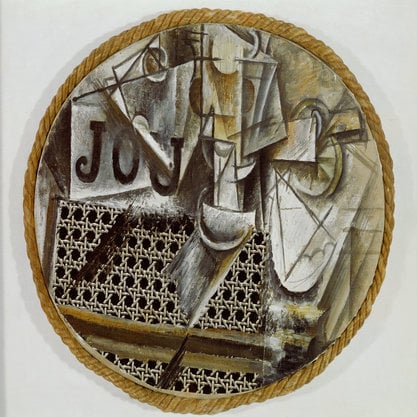Article
Picasso, Pablo (1881-1973) By Brauer, Fae
Article
Born in Malaga, it was in Barcelona that Picasso first identified himself as a subversive Modernist with a critical, contestatory and transgressive praxis exposing the savagery underlying civilization and the brutality of warfare alongside the paradoxical contradictions of modernity. Living in Paris from 1901, he excoriated the deprivations of La belle époque by portraying the outcasts of Montmartre in his Blue period and circus performers in his Rose Period. Drawing upon African indigenous cultures, from 1906 he revealed how prostitutes from France's African colonies became ravaged with venereal diseases in his 1907 painting, Les Desmoiselles d'Avignon. Inspired by new scientific discoveries, sensory aesthetics and the detritus of everyday life, from 1908 he depicted bodies and objects in fragments seen, felt, heard, tasted and smelt from different positions over time, producing, by 1912, Cubist Collages and Assemblages. Retreating into Ingreseque Neo-Classicism and Crystal Cubism after World War I, from 1927 his Cubistic fragments resurfaced into metamorphoses of the body during orgasmic ecstasy. To expose the barbarity of Fascism, particularly during the Spanish Civil War, Picasso produced Minotauromachy in 1935 and, after Fascist bombing of the Basque town of Guernica in 1937, prepared his mural with that name. Despite risks to his life and artwork, Picasso refused to leave Paris during the Nazi Occupation. Long an Anarchist, Catalan nationalist and fervent Spanish Republican, Picasso joined the French Communist Party after the Liberation of Paris and remained a lifelong member. Intrepidly revealing the torture, mutilations and decimations of World War II, especially in The Charnel House, Picasso exposed the chilling horrors committed during the Cold War, particularly the rape and execution of pregnant women and their children in Massacre in Korea and Rape of the Sabine Women. Continually producing peace posters and his Doves of Peace, particularly after the inaugural World Peace Conference in 1949, Picasso remained a deeply committed pacifist and political activist until his death in 1973. This is why it was not until civil liberties were restored to Spain eight years after his death – and six years after that of Franco – that Picasso’s Guernica was finally able to leave America for its rightful home.




